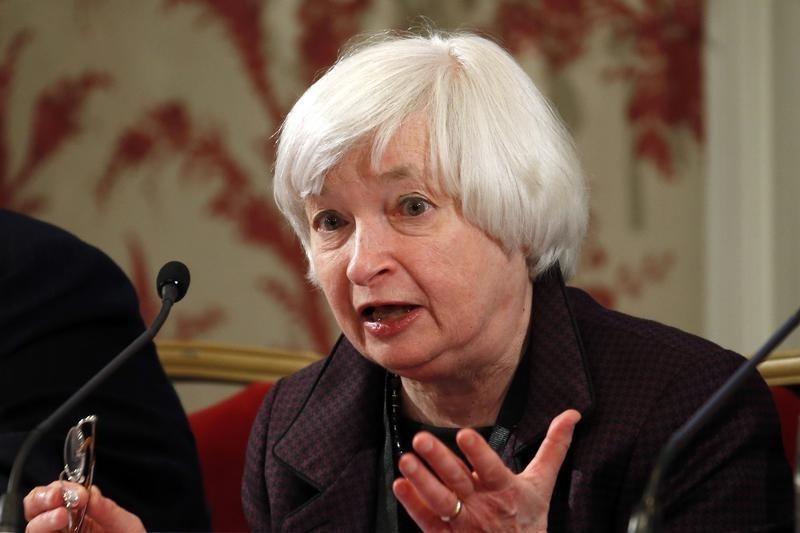Here are the top five things you need to know in financial markets on Friday, August 26:
1. Yellen watched for hints on Fed move
Markets looked ahead to the widely-anticipated speech from Federal Reserve (Fed) chair Janet Yellen at the Jackson Hole Economic Symposium on Friday at 14:00GMT, or 10:00AM ET, for some clarity as to the timing for when the U.S. central bank could raise interest rates.
After a string of hawkish remarks over the last two weeks from various Fed officials, markets were set to gauge Yellen’s own stance at the helm of the U.S. central bank, but experts were skeptical get the Fed chief would be willing to provide specific details.
Fed fund futures priced in the possibility of a rate hike for the September meeting at 27%, while odds for a move in December were 55.4%, according to Investing.com’s Fed Rate Monitor Tool.
2. Dollar, gold and U.S. futures little changed ahead of speech
The assets most affected by potential Fed moves, or lack of action, were staging a holding pattern ahead of the risk event.
The U.S. dollar index, which measures the greenback’s strength against a trade-weighted basket of six major currencies, slipped 0.08% to 94.60, at 9:49AM GMT, or 5:49AM GMT.
U.S. futures pointed to a flat open on Friday with investors reluctant to make a big move before Yellen’s remarks. At 9:49AM GMT, or 5:49AM ET, the blue-chip Dow futures inched up 7 points, or 0.04%, S&P 500 futures edged forward 2 points, or 0.07%, and the Nasdaq 100 futures traded up 2 points, or 0.03%.
Gold for December delivery on the Comex division of the New York Mercantile Exchange inched up 0.34% to $1,329.15 a troy ounce.
3. Oil drops as Saudi Arabia downplays need for OPEC agreement
Oil prices were lower in early morning trade on Friday, as the Saudi energy minister shrugged off the need for OPEC to intervene to stabilize markets.
Saudi Arabian Energy Minister Khalid Al-Falih told Reuters late on Thursday that "we don't believe any significant intervention in the market is necessary other than to allow the forces of supply and demand to do the work for us", adding that the "market is moving in the right direction" already.
Meanwhile, market participants looked ahead to latest count of U.S. rigs in production from Baker Hughes out later on Friday. Last week, Baker Hughes said the number of rigs drilling for oil in the U.S. last week increased by 10 to 406, the eighth consecutive weekly rise and the 11th increase in 12 weeks, spurring concern over the global supply glut.
U.S. crude oil futures fell 0.30% to $47.19 at 9:52AM GMT, or 5:52AM ET, while Brent oil lost 0.72% to $49.31.
4. Q2 GDP expected to be revised lower
The U.S. will release revised figures on second quarter economic growth at 12:30GMT, or 8:30AM ET, on Friday. The data is expected to show that the economy expanded by 1.1% in the April-June period, downwardly revised from a preliminary estimate of 1.2%.
Besides the GDP report, the University of Michigan will release revised consumer sentiment numbers for August.
5. Japan’s inflation falls the most in 3 years, BoJ under pressure
Japan's consumer price index (CPI) fell by the most in more than three years in July as more firms delayed price hikes due to already weak consumption.
The nationwide core consumer price index, which excludes volatile fresh food prices but includes oil products, fell 0.5% in July from a year earlier, the fifth straight month of declines, according to a report released Friday. It exceeded a median forecast for a 0.4% decline and June's 0.4% drop.
The data will keep the Bank of Japan (BoJ) under pressure to expand an already massive stimulus program.
